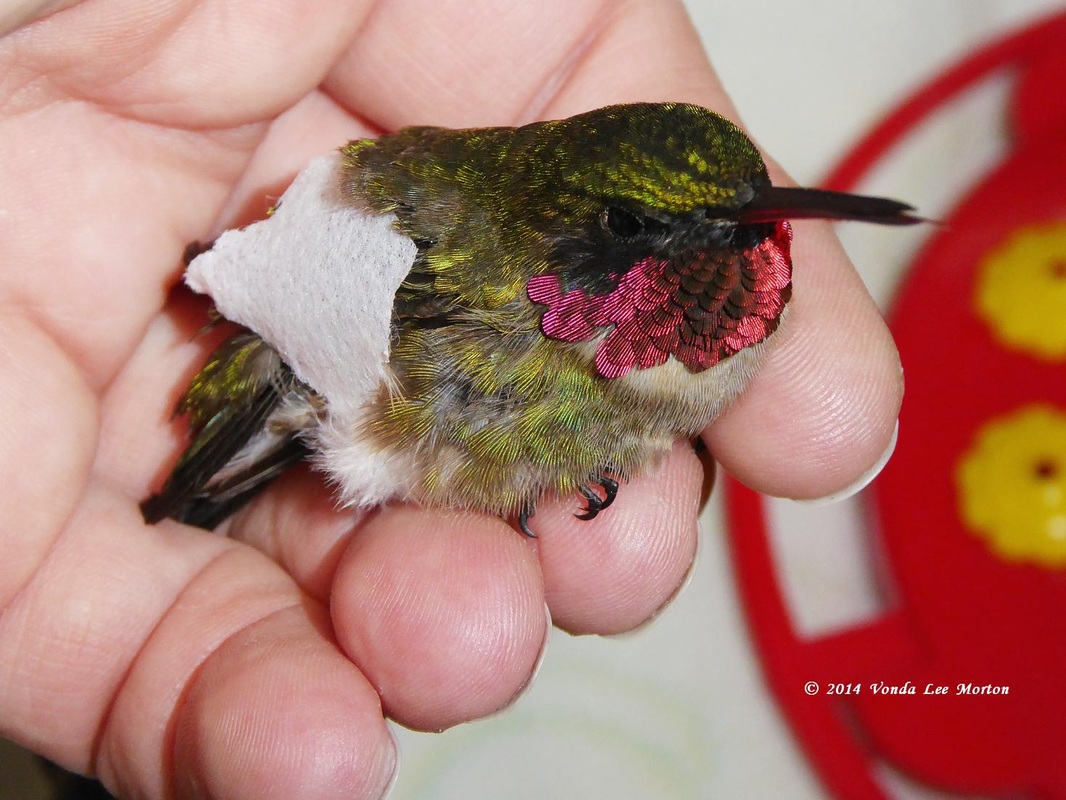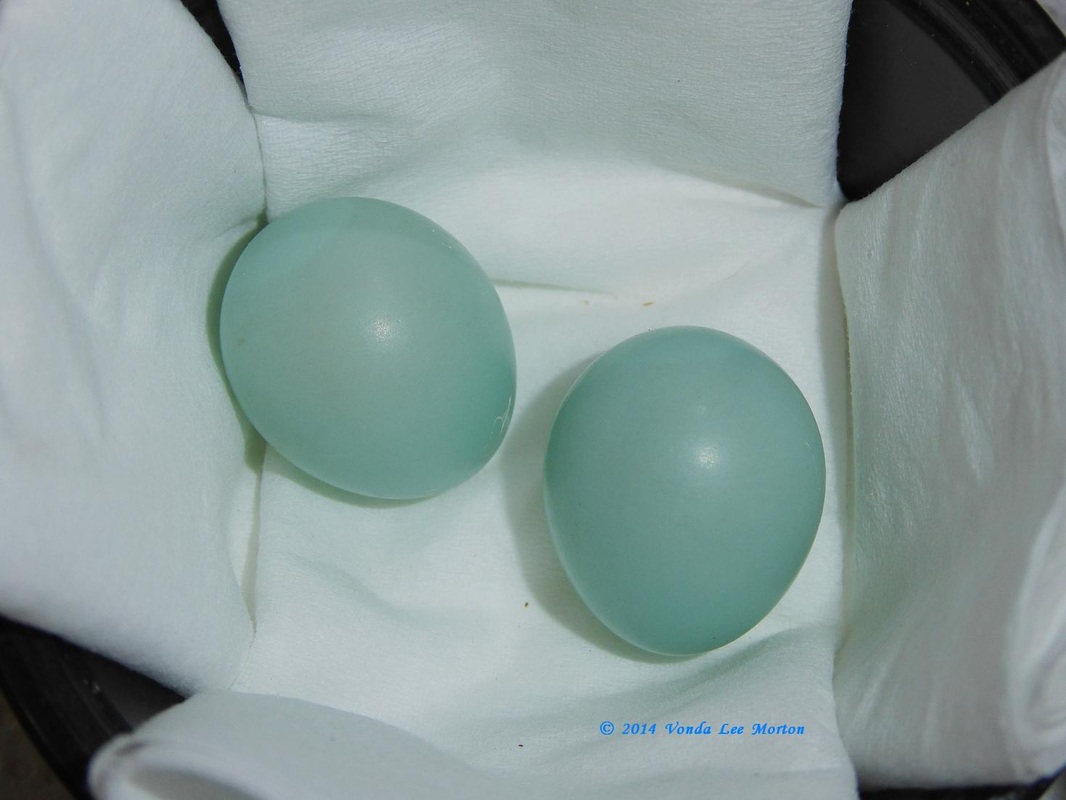Don’t worry, I’m not planning to give up rehabbing—not just yet, anyway. I just had a really crappy week, is all…
First off, no pix of the GHOs this week—I just honestly didn’t get around to snapping photos of them. They’re doing fine and getting footy when I clean their crate, which is a good thing—that and their beak clicking and hissing means they’ve totally retained their wildness, which is what we want.
And second—and the main cause of my moroseness today—the sweet little female flyer died earlier this afternoon. She showed no signs of illness or injury; she was eating more and more solids but still taking some formula; she was alert and active…I’d just last week moved her into a larger indoor cage so she’d have more room to play until she was fully weaned, and she seemed to be quite happy, peering at me from the opening to her little nest box. This morning she took her formula as usual; four hours later, I walked into the rehab area and glanced at her cage out of habit, and she was sprawled on her belly on the bottom of the cage, dead. I have no clue what happened, but it definitely took the wind out of my sails today, I can tell you. I don’t like losing babies, period, but I especially don’t like losing them for no apparent reason.
Several days earlier, LWR had a ruby-throated hummingbird come in with a broken wing and, I suspected, internal injuries. I knew his chances of release were slim—hummers’ wings must be able to move in a figure-eight, and usually when they’re broken, they freeze upon healing, so the hummer doesn’t have full range of motion and can’t fly. Still, hummers generally do well in rehab, so it was worth a shot. Every now and then, a fracture will heal properly. This little guy was eating on his own but somewhat lethargic and any rehabber who’s ever worked with a hummer can tell you that they’re usually quite active, even with broken wings. I was hopeful but not optimistic, and sure enough, he didn’t survive the night.
Waterfowl MUST be in water at least once a day, to maintain waterproofing on their feathers and for the health of their eyes. For a loon, which cannot function at all on land—their feet are positioned so far back on their bodies that they cannot stand or walk on land—being in water becomes even more imperative. Two of these loons, the two who had been with the inexperienced vet the longest, showed definite signs of having been out of water too long. Add to that the fact that they had been kept for nearly four days, and in addition to their health nearly being compromised, they were behind the rest of the migrating flock.
After ensuring the birds were ready to resume their migration, I enlisted my nephew, niece-in-law and a couple of their friends to aid me with the release, so I could video while they let the loons go. There’s a lot of chatter on the release vid, as a result—sorry ‘bout that…
For a quick bluebird natural history lesson, the female usually lays one egg a morning for 3-6 days, sometimes skipping one day, for a clutch size ranging from 3-6 eggs. A young female might lay only two eggs. She won’t start incubating until the last egg is laid, but she will spend brief periods on the eggs before full incubation starts, so they usually feel as warm as or slightly warmer than the surrounding air. Once the last egg is laid, she may wait 4-5 days before beginning full-fledged incubation.
We were at the 5-day window of opportunity when the landowner became concerned at the lack of activity in and around the nest box. Not only had the mated pair disappeared; the eggs were cold, indicating not even the limited egg-laying incubation was taking place.
After assessing the situation and, because this was nearby, visiting the nest box for myself, I agreed that something was not right. I removed the eggs from the nest and determined that they appeared to be viable, despite the lack of incubation to this point. I made the executive decision to remove the eggs, as we were at the outside window of opportunity had the female been around to incubate. So…now we wait and see what happens. They may or may not hatch, but given the alternative—leaving them in an abandoned nest to rot—attempting to hatch them seemed like a better option.
If you’re still uncertain, please, PLEASE call your local songbird rehabber for further guidance. Never, ever remove eggs or babies from the nest unless instructed to do so by a federally licensed songbird rehabber who has determined that the removal is necessary--and I promise you, those instances are few and far between. This is only the second time in over 10 years that I’ve needed to do so, and I honestly don’t like doing it: it’s a fairly complicated and time-consuming undertaking, there’s no guarantee the eggs will hatch, and the survival of any hatchlings is iffy, at best.


 RSS Feed
RSS Feed
